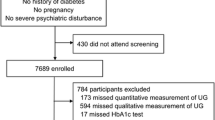Abstract
• Diabetes mellitus is a growing healthcare problem internationally, and poses a major burden from both a individual and societal perspective.
• Diabetes causes potentially life-threatening complications that are preventable if the disease is detected early and appropriate interventions are put in place. Early detection is therefore imperative for preventing diabetes-related morbidity and mortality.
• Current methods of detection, including the oral glucose tolerance test (OGTT), and measures of fasting plasma glucose, glycated hemoglobin (HbA1c), or glycated albumin, can be time-consuming and uncomfortable for patients.
• Myoinositol can be measured in urine and has been found to be elevated in patients with diabetes and glucose intolerance; it has thus proven useful as a marker for the early detection of these conditions.
• Lucica® MI is a diagnostic kit for the measurement of urinary myoinositol; it is used to detect glucose intolerance and diabetes mellitus at an early stage in disease progression. The test is based on an enzymatic method that uses liquid reagents requiring no preparation. Clinical trial results demonstrate that the test could be used to detect not only diabetes mellitus, but also to distinguish impaired fasting glucose and impaired glucose tolerance from normal glucose tolerance.

Similar content being viewed by others
References
Tominaga M, Eguchi H, Manaka H, et al. Impaired glucose tolerance is a risk factor for cardiovascular disease, but not impaired fasting glucose: the Funagata Diabetes Study. Diabetes Care 1999; 22: 920–4
Nóvoa FJ, Boronat M, Saavedra P, et al. Differences in cardiovascular risk factors, insulin resistance, and insulin secretion in individuals with normal glucose tolerance and in subjects with impaired glucose regulation: the Telde Study. Diabetes Care 2005 Oct; 28(10): 2388–93
Oizumi T, Daimon M, Jimbu Y, et al. Impaired glucose tolerance is a risk factor for stroke in a Japanese sample: the Funagata study. Metabolism 2008 Mar; 57(3): 333–8
Blake DR, Meigs JB, Muller DC, et al. Impaired glucose tolerance, but not impaired fasting glucose, is associated with increased levels of coronary heart disease risk factors: results from the Baltimore Longitudinal Study on Aging. Diabetes 2004 Aug; 53(8): 2095–100
Muntner P, He J, Chen J, et al. Prevalence of non-traditional cardiovascular disease risk factors among persons with impaired fasting glucose, impaired glucose tolerance, diabetes, and the metabolic syndrome: analysis of the Third National Health and Nutrition Examination Survey (NHANES III). Ann Epidemiol 2004 Oct; 14(9): 686–95
Lim SC, Tai ES, Tan BY, et al. Cardiovascular risk profile in individuals with borderline glycemia: the effect of the 1997 American Diabetes Association diagnostic criteria and the 1998 World Health Organization Provisional Report. Diabetes Care 2000 Mar; 23(3): 278–82
Knowler WC, Barrett-Connor E, Fowler SE, et al. Reduction in the incidence of type 2 diabetes with lifestyle intervention or metformin. N Engl J Med 2002; 346(6): 393–403
Engelgau MM, Narayan KM, Herman WH. Screening for type 2 diabetes. Diabetes Care 2000; 23: 1563–80
Yamakoshi M, Takahashi M, Kouzuma T, et al. Determination of urinary myoinositol concentration by an improved enzymatic cycling method using myoinositol dehydrogenase from Flavobacterium sp. Clin Chim Acta 2003; 328(1–2): 163–71
Yamagata F, Kawazu S, Tominaga M, et al. Determination of urinary myo-inositol at 75g oral glucose tolerance test: comparisons of normal, borderline and diabetic types, and setting of cut-off value by ROC analysis. Jpn J Med Pharm Sci 2004; 52(6): 975–80
Kawazu S, Tominaga M, Yamagata F, et al. Determination of urinary myo-inositol: comparison of glucose intolerance group with normal type. Jpn J Med Pharm Sci 2004; 52(6): 981–7
Sarashina G, Yamakoshi M, Noritake M, et al. A study of urinary myo-inositol as a sensitive marker of glucose intolerance. Clin Chim Acta 2004; 344(1–2): 181–8
Acknowledgements
Dr Yamakoshi is a full time employee of the Asahi Kasei Pharma Corporation, the manufacturer of Lucica® MI.
Dr Kawazu is a medical doctor and not funded in any way by the Asahi Kasei Pharma Corporation.
Author information
Authors and Affiliations
Corresponding author
Rights and permissions
About this article
Cite this article
Yamakoshi, M., Kawazu, S. Lucica® MI Urinary Myoinositol Kit. Mol Diag Ther 12, 189–191 (2008). https://doi.org/10.1007/BF03256283
Published:
Issue Date:
DOI: https://doi.org/10.1007/BF03256283




